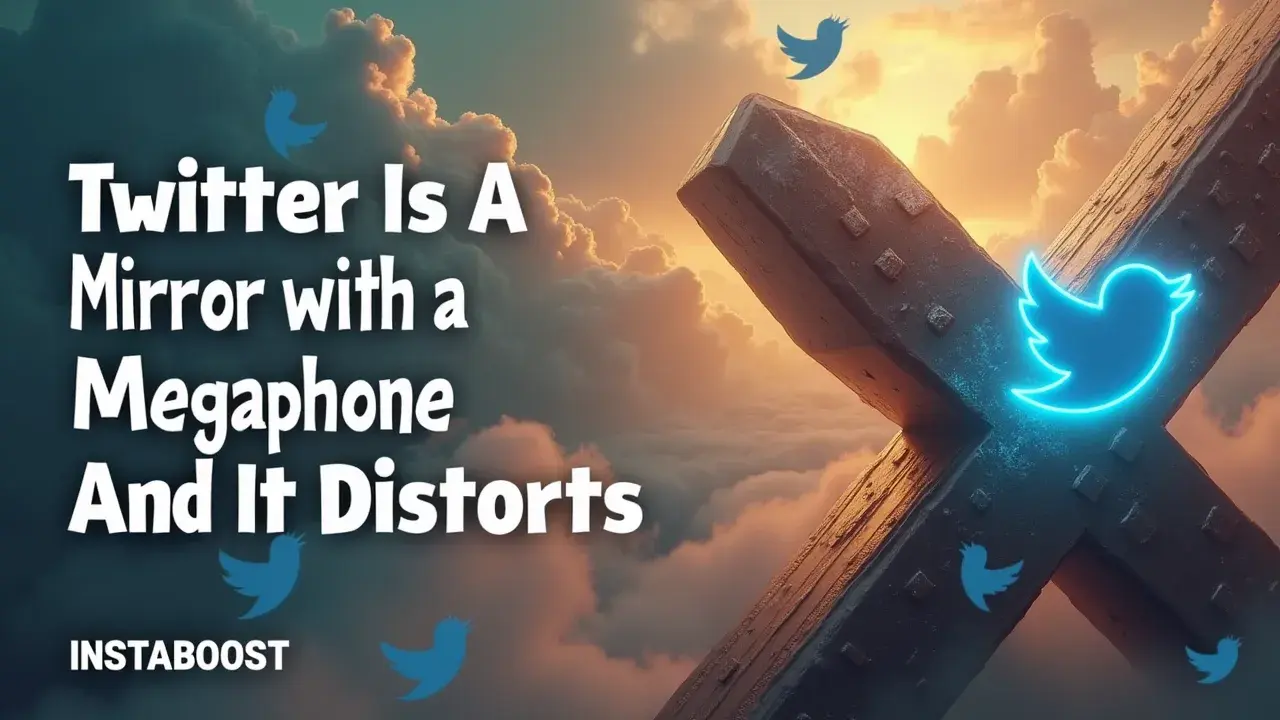Is X (Twitter) A Mirror With A Megaphone That Distorts?
X (Twitter) can reflect perspectives while amplifying them in ways that reshape perception. The megaphone effect elevates certain voices and framings, nudging what users notice and how they respond. As posts are shared and reframed, emphasis and visibility shift, subtly altering both what is seen and what is said. Recognizing this dynamic helps focus on signal over noise and choose contributions that match intent and context.
The Platform That Shapes More Than It Shares
When you post on Twitter – now called X – it’s less like chatting with a few friends and more like saying something into a microphone while a big, unpredictable crowd listens in. What you say can end up reaching people you never expected, and sometimes what you meant gets lost or misunderstood.
The way X works – trending topics, retweets, and those algorithm-chosen feeds – means certain voices or opinions get picked up and sent far beyond their usual followers. It’s easy to forget how much that changes things. X doesn’t just reflect what’s happening; it decides, in a way, what feels important or urgent by showing us the things that catch on quickly, whether they’re dramatic, divisive, or simply louder than the rest.
The way X works – trending topics, retweets, and those algorithm-chosen feeds – means certain voices or opinions get picked up and sent far beyond their usual followers. It’s easy to forget how much that changes things. X doesn’t just reflect what’s happening; it decides, in a way, what feels important or urgent by showing us the things that catch on quickly, whether they’re dramatic, divisive, or simply louder than the rest.
Thoughtful replies or quieter points of view can get buried, even if they add more to the conversation. This isn’t just a quirk of the platform – it’s part of how it’s built, and it really does shape what a lot of people end up believing or caring about.
That matters if you’re trying to build a business there, or grow your X presence, or reach more people with your work. It’s not enough to show up and share what you know; you have to notice how the whole system tilts the conversation, or you might end up repeating the same things as everyone else, wondering why it doesn’t quite feel like you.
That matters if you’re trying to build a business there, or grow your X presence, or reach more people with your work. It’s not enough to show up and share what you know; you have to notice how the whole system tilts the conversation, or you might end up repeating the same things as everyone else, wondering why it doesn’t quite feel like you.

Why Twitter’s Echoes Shape More Than Opinions
It’s interesting how much of online success comes down to something pretty basic. If you look at Twitter – or X, now – the whole thing really revolves around visibility. Every time you like, retweet, or reply, you’re not only reacting to a post, you’re pushing it out to more people. That’s a big reason why Twitter shapes so much of what people end up talking about. When a tweet gains traction – because it’s funny, sharp, or touches a nerve – it can end up reaching far beyond the original group who saw it. Researchers have even found that when something goes viral on Twitter, it can shift what journalists decide to write about, change how people see an issue, and even feed into policy debates.
What stands out to me is that most of what fills people’s timelines actually comes from a pretty small group: politicians, journalists, and a handful of creators. Even follower counts, which people sometimes build up over time or with reliable X followers, factor into whose voices cut through the noise. So even though it feels like you’re dipping into a global conversation, you’re mostly hearing from the same set of voices, amplified by the platform’s algorithms.
It isn’t a clear window onto the world – it’s shaped by who speaks the loudest or gets picked up by the system. For anyone thinking about building a presence or making money on X, it seems important to really pay attention to this. Standing out isn’t only about having good ideas; it’s about understanding how certain voices get boosted again and again. If you can see who’s setting the tone and the way their messages move, you can probably find a way to work with it – or at least see it for what it is.
Drifting Into Distortion: Sharpening Your Social Strategy
Most plans go off track gradually rather than all at once. If you look at Twitter – or X – it’s easy to see how that happens. You might sign up because you want to connect with people in your field, share what you know, or experiment with new ways to earn a living.
But with so many trending topics and viral threads, it doesn’t take much for your original focus to start slipping. After a while, the things you post begin to feel shaped by whatever happens to be popular that day. You might have intended to offer helpful advice or start honest discussions, but the way the platform works keeps nudging you to chase fast reactions instead.
Before long, it’s easy to find yourself more focused on numbers – likes, retweets – than on why you wanted to be there in the first place. Some people even look into ways to order likes on X, just to keep pace with what seems to matter. For people who coach or create, it makes a difference to pause and be intentional. It helps to ask yourself what you want each tweet to do, who you hope will read it, and how it fits into whatever bigger plan you have – whether that means starting the right conversations, finding clients, or building your brand, the way INSTABOOST talks about. Setting aside time to see what’s actually working can keep you from drifting too far off course. This isn’t about following a posting calendar or automating everything. It’s more about paying attention so the flow of the platform doesn’t end up deciding things for you. When you approach it that way, Twitter can actually support your goals – you end up talking to the people you care about, in a way that feels like it matters.
Resisting the Megaphone: Real Value Over Viral Validation
I spent a lot of time trying to figure out what makes people successful online. I thought if I studied enough viral tweets or watched how certain creators seemed to pull in money and attention, I’d crack the code. At one point, I even found myself reading tips about how to maximize views on X, hoping there was some trick I’d missed.
But after a few weeks of that, I mostly felt tired and sort of disconnected from why I wanted to be here in the first place. The platform is always nudging you to chase numbers – retweets, likes, whatever – and it starts to shape what you think is important. You see people jumping on every trending topic or changing how they talk just to please the algorithm, and it works if the goal is to get noticed.
But after a while, it all starts to sound the same, and it’s hard to tell what anyone actually stands for anymore. The truth is, having a big follower count doesn’t always mean you’re building real connections or trust. The stuff that actually sticks – whether you’re trying to help people as a coach, sharing what you’re learning, or trying to solve a problem for someone – comes from showing up in the same way over time, answering questions, sharing things you’ve tried, and actually caring how it lands. It can feel a lot quieter than the big trends, and sometimes you wonder if anyone is even paying attention. I keep thinking that it’s easy to get caught up in the race to be seen, but there’s something steadier about figuring out who you want to talk to and what you want to talk about, and building from there. The noise isn’t going away, but you don’t have to join in. I’m still working on tuning it out.















